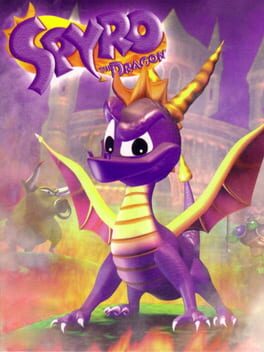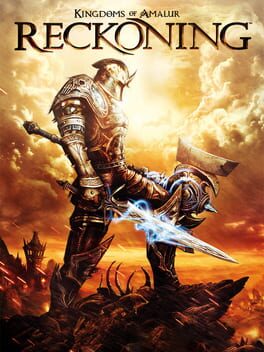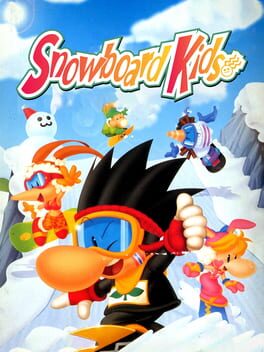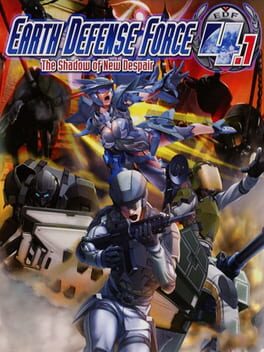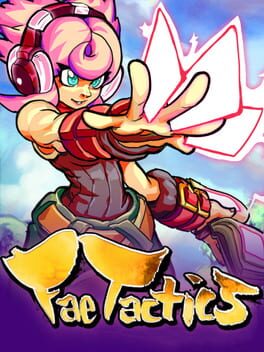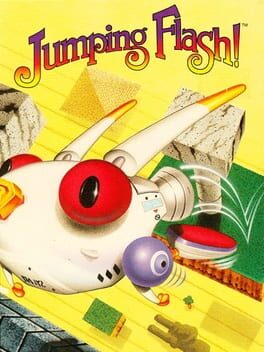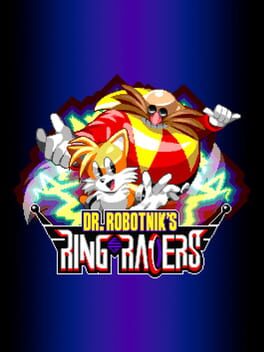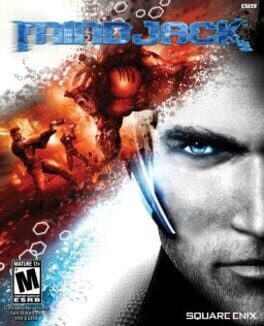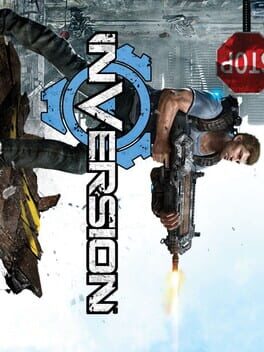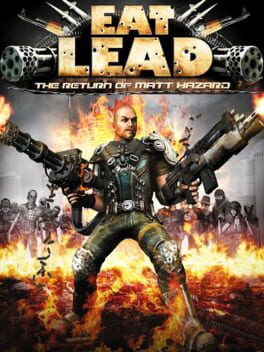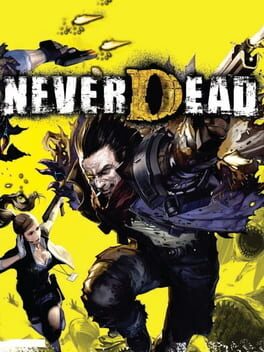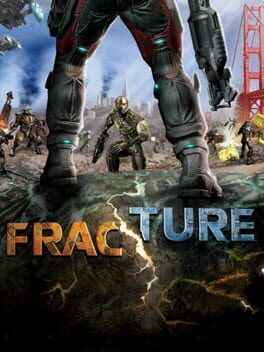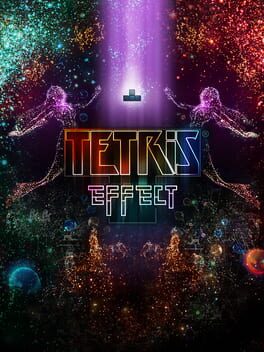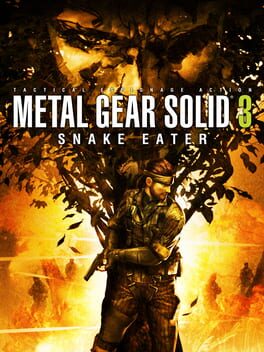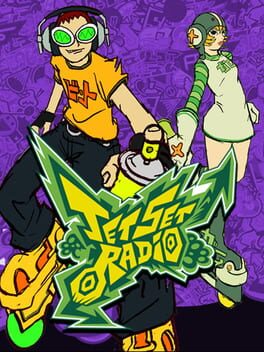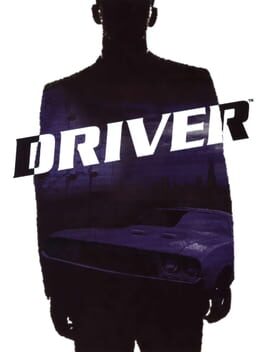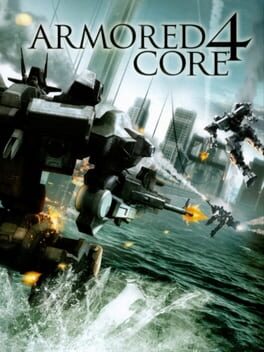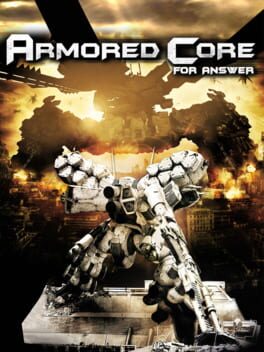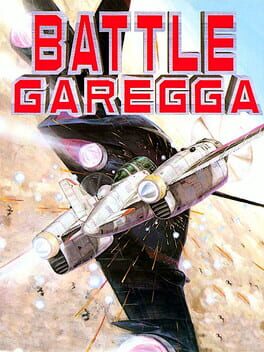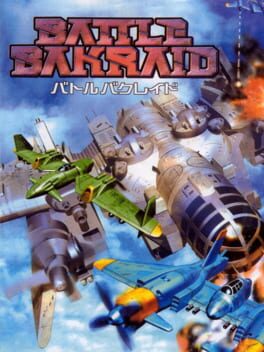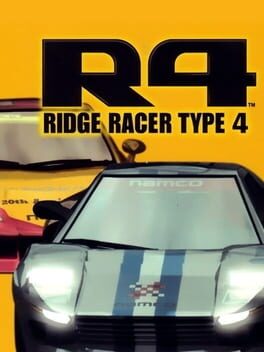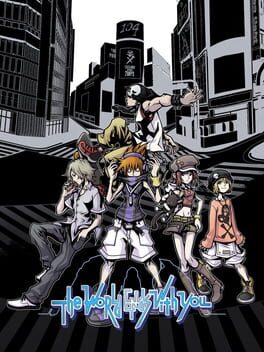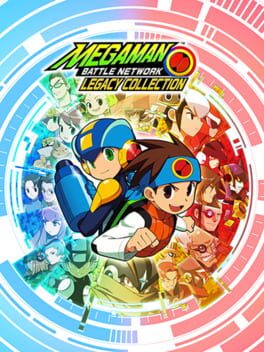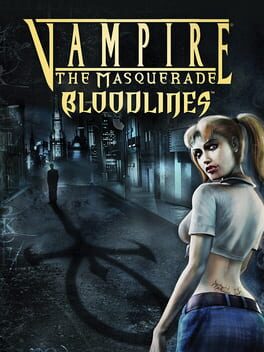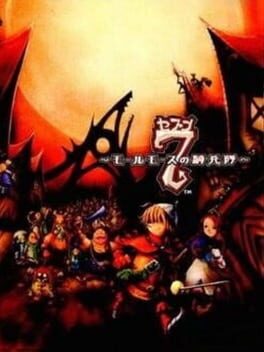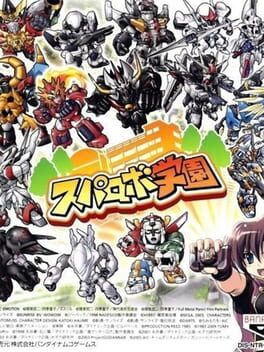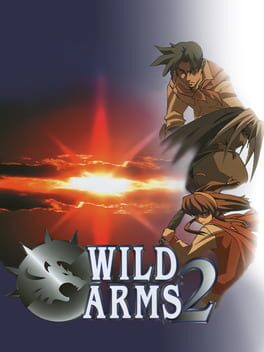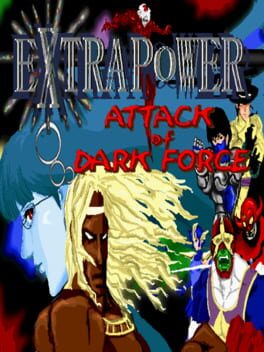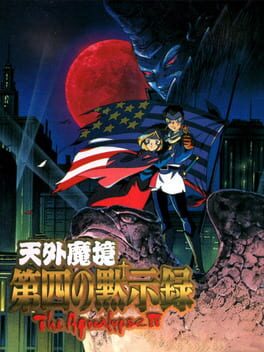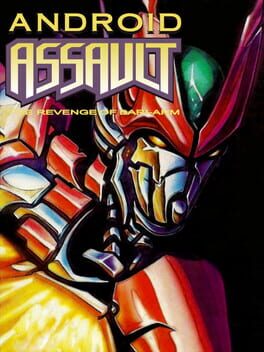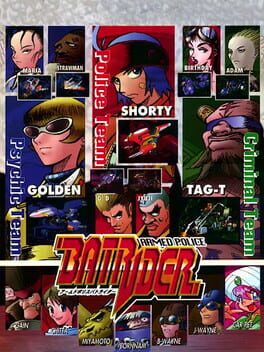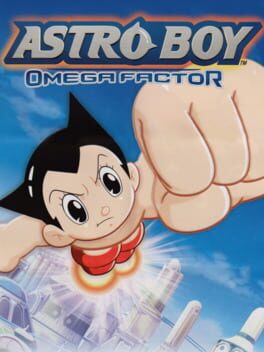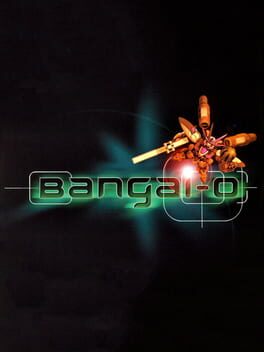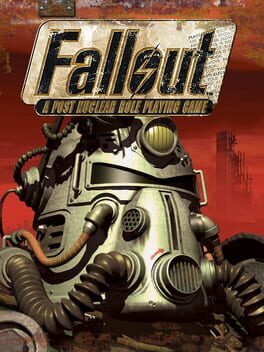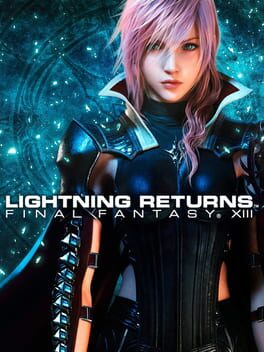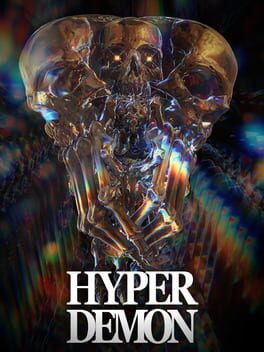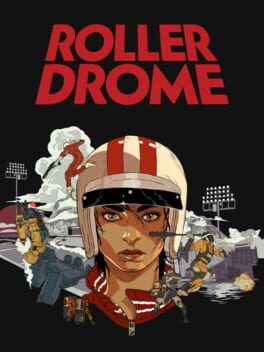JohnHarrelson
1858 reviews liked by JohnHarrelson
Spyro the Dragon
1998
In the world of dragons...
One of my earliest gaming memories was watching a friend play Spyro 1 on his PS2, running off a memory card(?). That was admittedly super weird, but i thought nothing of it back then because I was a child who didn't comprehend how any of this worked. Spyro left enough of an impression on me that I asked to be him for Halloween, and my aunt actually handmade a big ol' purple dragon costume for me to wear. Imagine that, a 4-year old getting attached to a character he hardly knew. All this preamble is just to admit that I'm totally guilty. I ended up locking myself into Nintendo systems for the longest time in my youth, so the Spyro I had played was totally off-limits for over a decade. All this time later, and I had never picked up and played that original game...until just a few days ago.
I guess it makes a lot of sense how I managed to grasp Spyro back when I could barely wrap my baby hands around the concept of a controller. Spyro controls so smoothly, even on a dpad. You jump, spit fire, glide, and dash around. Actions like dashing also recenter the camera behind you in a pinch, so it's not too cumbersome to work with. A lot of the combat is rudimentary: if an enemy has shiny armor, ram it. If it's bigger or faster than you, burn it. If one method doesn't work, odds are that the other one will. But "simple" really works for this game's mechanics, fully complemented by the stages themselves.
Each world is represented by this big hub area, with enough secrets and goodies to collect that they may as well be considered levels in their own right. Each hub has portals that fly you to the proper levels, and even if the levels aren't truly interconnected, the sheer scale afforded to every level captures that high fantasy vibe perfectly. Every stage you visit has a different vibe to it, featuring unique enemies, hazards, or both. There's this dark tree hollow where enemies shift between being fierce demons and wimpy imps depending on if light is touching them. There's a big open level where you charge and glide between treetops. In one of the final levels, the enemies are dressed up like Rambo and wield actual machine guns. Everything is so animated too. PS1 squash-n-stretch, baby.
I'd be remiss to not mention the flight stages in each world, but they didn't leave that much of an impression on me. Their routes are pretty straightforward once you get used to the controls. The only one that troubled me was the secret first one, because there is no clear routing for that one. This game also has bosses...I think? Every single one of them is about as effective at killing you as the normal enemies, which is to say they're as flammable as your local gas station. If I had to compliment them, the regular game flow isn't interrupted by the boss taking damage. They're basically like any other unique enemy in that regard, they just require a little extra burninating. The dialogue is kinda funny in an "I think they're trying to be humorous?" kind of way. Spyro's definitely trying to have a "cool" factor to his snide remarks, but I just wanna pinch his E-rated cheeks instead. Then you watch a beefy dragon Named "Thor" blurt out the most feeble gratitude you've ever heard, and it's inexplicably hilarious.
All in all, I'm impressed with Insomniac's first runaway success. It's not quite where things started for their studio, but it's definitely what kickstarted their current legacy. I could stop here and say I avenged my pre-gamer childhood self, but I think I'm in it for the long haul now.
The adventure continues...
One of my earliest gaming memories was watching a friend play Spyro 1 on his PS2, running off a memory card(?). That was admittedly super weird, but i thought nothing of it back then because I was a child who didn't comprehend how any of this worked. Spyro left enough of an impression on me that I asked to be him for Halloween, and my aunt actually handmade a big ol' purple dragon costume for me to wear. Imagine that, a 4-year old getting attached to a character he hardly knew. All this preamble is just to admit that I'm totally guilty. I ended up locking myself into Nintendo systems for the longest time in my youth, so the Spyro I had played was totally off-limits for over a decade. All this time later, and I had never picked up and played that original game...until just a few days ago.
I guess it makes a lot of sense how I managed to grasp Spyro back when I could barely wrap my baby hands around the concept of a controller. Spyro controls so smoothly, even on a dpad. You jump, spit fire, glide, and dash around. Actions like dashing also recenter the camera behind you in a pinch, so it's not too cumbersome to work with. A lot of the combat is rudimentary: if an enemy has shiny armor, ram it. If it's bigger or faster than you, burn it. If one method doesn't work, odds are that the other one will. But "simple" really works for this game's mechanics, fully complemented by the stages themselves.
Each world is represented by this big hub area, with enough secrets and goodies to collect that they may as well be considered levels in their own right. Each hub has portals that fly you to the proper levels, and even if the levels aren't truly interconnected, the sheer scale afforded to every level captures that high fantasy vibe perfectly. Every stage you visit has a different vibe to it, featuring unique enemies, hazards, or both. There's this dark tree hollow where enemies shift between being fierce demons and wimpy imps depending on if light is touching them. There's a big open level where you charge and glide between treetops. In one of the final levels, the enemies are dressed up like Rambo and wield actual machine guns. Everything is so animated too. PS1 squash-n-stretch, baby.
I'd be remiss to not mention the flight stages in each world, but they didn't leave that much of an impression on me. Their routes are pretty straightforward once you get used to the controls. The only one that troubled me was the secret first one, because there is no clear routing for that one. This game also has bosses...I think? Every single one of them is about as effective at killing you as the normal enemies, which is to say they're as flammable as your local gas station. If I had to compliment them, the regular game flow isn't interrupted by the boss taking damage. They're basically like any other unique enemy in that regard, they just require a little extra burninating. The dialogue is kinda funny in an "I think they're trying to be humorous?" kind of way. Spyro's definitely trying to have a "cool" factor to his snide remarks, but I just wanna pinch his E-rated cheeks instead. Then you watch a beefy dragon Named "Thor" blurt out the most feeble gratitude you've ever heard, and it's inexplicably hilarious.
All in all, I'm impressed with Insomniac's first runaway success. It's not quite where things started for their studio, but it's definitely what kickstarted their current legacy. I could stop here and say I avenged my pre-gamer childhood self, but I think I'm in it for the long haul now.
The adventure continues...
Snowboard Kids
1997
only took three and a half years, but through my innovative technique of playing a handful of missions every four months I have finally taken down this beast. absurd how structurally lazy this game is: 89 single-player missions, all back-to-back with no side quests or key quest system or any sort of progression/organization beyond "play a mission and then unlock the next one." it should be obvious that most of these missions bear more than a small resemblance to one another due to the comparative dearth of maps and enemy types, so throwing the player into this many mandatory missions just exacerbates the repetition. sure, this is a game oriented around an endless grind for weapon and armor drops, but evidently the game's bounty of missions vastly exceed the bounds of the game's weapon pools given that identical pools appear in many of the missions on a given difficulty and rarely give new items. the weapon level drop curve is such that even running the first couple of missions on inferno, the highest difficulty, primarily gave me weapons I already had from midgame on normal, three difficulties below it. this would be more bearable if at least the weapon pools between all four classes were shared... but they aren't, so good luck if you played through the campaign with one class and would like to switch on the next difficulty up, because you won't have shit to work with. the developers recognized these unforced errors because edf5 rectified a fair number of them (primarily shared weapon pools and an upgrade system when you pick up a dupe), but it stings a bit that this entry completely fumbles these elements here.
I'm dedicated to fencer (the armored suit class) through and through, and in this particular entry fencer gets an essential (if perhaps not intended) dash cancel that lifts the weight of the rest of the game on its back. by firing the otherwise mediocre javelin catapult directly after executing a side dash, the ending lag of the dash will get overwritten with extremely fast javelin recovery frames, enabling quick dash spam across the battlefield. a couple weapon types possess the side dash as an auxillary ability, with perhaps no one more busted than the blasthole spear lineage, which provide rapid-fire, high-DPS shots at close range. the synergy is quickly clear: hit-and-run tactics with the spears and the dash cancel can easily depose even spongier enemies as long as one manages their cooldowns. of course, if this was the whole gameplan, the game would stale over such a long campaign, but luckily the fencer uniquely possesses switchable item sets. I kept a mid-range cannon and long-range mortars on deck in the other set for most of the ride as heavy artillery to deal the majority of my long-range damage, and since these remove the incredible mobility of the javelin/spear combo, you have a comfortable role trade-off to deal with in each fight. switching sets can't be done willy-nilly, and outside of wakeup animations most recovery lag will keep you from swapping, preserving the commitment of the most truly heinous fencer weaponry. the sluggish movement of the fencer normally would not necessarily be fun to use, as it would submerge the game into wading through enemies and tanking shot after shot, but this particular dash-cancel wrinkle helps sell a hot-and-cold playstyle that one rarely finds in a third-person shooter.
scenario-wise, probably one of the best examples I can think of where simply mass-spawning identical enemies makes for very solid encounters. although my brain would like to call it a TPS musou, it really hews closer to a wave shooter or arena shooter due to the centralization of the battle around the player character. you may enter with allies to assist you, but they rarely last past the first wave, and thus the game devolves into controlling the mass of enemies following you and you alone around the map. at its worst, it's a lot of kiting, either soothed by the need to stop to unleash your best weapons or agitated by the need to build up a healthy distance from the enemies before you unleash your best weapons, depending on how you look at it. only the cheap fodder succumb to pure tracking tactics, however, and with enough alternate opponents that lockdown certain parts of the map, roam, or patrol, you can find yourself properly flanked in a way the fodder can't do alone. of these the most fundamental are the hectors: large bipedal robots with an assortment of heavy weaponry and shields. getting in one's sights can subject the player to anything from full-map range plasma shots to short-range sheets of sparks, the latter of which portends poorly for any fencer player clamped to the ground by it. the variety of these and the use of different AI routines for each make hectors an essential flavor for any environment, especially maps with lots of enemy spawn points. other large enemies are equally fascinating (the segmented quadruped deroys and their long-range leg melee are rather fierce), yet the bosses tend to make clear how much of the game relies on hundreds of adds running around the screen at once due to their gigantic hurtboxes and rudimentary behavior. perhaps this is why the final boss opts for a much smarter strategy of smothering the earth with artificial ceiling of weaponry, with the top hurtbox only accessible when openings in the ceiling plates have been cracked open.
I'm dedicated to fencer (the armored suit class) through and through, and in this particular entry fencer gets an essential (if perhaps not intended) dash cancel that lifts the weight of the rest of the game on its back. by firing the otherwise mediocre javelin catapult directly after executing a side dash, the ending lag of the dash will get overwritten with extremely fast javelin recovery frames, enabling quick dash spam across the battlefield. a couple weapon types possess the side dash as an auxillary ability, with perhaps no one more busted than the blasthole spear lineage, which provide rapid-fire, high-DPS shots at close range. the synergy is quickly clear: hit-and-run tactics with the spears and the dash cancel can easily depose even spongier enemies as long as one manages their cooldowns. of course, if this was the whole gameplan, the game would stale over such a long campaign, but luckily the fencer uniquely possesses switchable item sets. I kept a mid-range cannon and long-range mortars on deck in the other set for most of the ride as heavy artillery to deal the majority of my long-range damage, and since these remove the incredible mobility of the javelin/spear combo, you have a comfortable role trade-off to deal with in each fight. switching sets can't be done willy-nilly, and outside of wakeup animations most recovery lag will keep you from swapping, preserving the commitment of the most truly heinous fencer weaponry. the sluggish movement of the fencer normally would not necessarily be fun to use, as it would submerge the game into wading through enemies and tanking shot after shot, but this particular dash-cancel wrinkle helps sell a hot-and-cold playstyle that one rarely finds in a third-person shooter.
scenario-wise, probably one of the best examples I can think of where simply mass-spawning identical enemies makes for very solid encounters. although my brain would like to call it a TPS musou, it really hews closer to a wave shooter or arena shooter due to the centralization of the battle around the player character. you may enter with allies to assist you, but they rarely last past the first wave, and thus the game devolves into controlling the mass of enemies following you and you alone around the map. at its worst, it's a lot of kiting, either soothed by the need to stop to unleash your best weapons or agitated by the need to build up a healthy distance from the enemies before you unleash your best weapons, depending on how you look at it. only the cheap fodder succumb to pure tracking tactics, however, and with enough alternate opponents that lockdown certain parts of the map, roam, or patrol, you can find yourself properly flanked in a way the fodder can't do alone. of these the most fundamental are the hectors: large bipedal robots with an assortment of heavy weaponry and shields. getting in one's sights can subject the player to anything from full-map range plasma shots to short-range sheets of sparks, the latter of which portends poorly for any fencer player clamped to the ground by it. the variety of these and the use of different AI routines for each make hectors an essential flavor for any environment, especially maps with lots of enemy spawn points. other large enemies are equally fascinating (the segmented quadruped deroys and their long-range leg melee are rather fierce), yet the bosses tend to make clear how much of the game relies on hundreds of adds running around the screen at once due to their gigantic hurtboxes and rudimentary behavior. perhaps this is why the final boss opts for a much smarter strategy of smothering the earth with artificial ceiling of weaponry, with the top hurtbox only accessible when openings in the ceiling plates have been cracked open.
Pikmin
2001
The secret behind Pikmin’s success was not that it somehow outclassed classic real-time strategy franchises, but rather that it was never competing with them to begin with. According to Shigeru Miyamoto, he came up with the idea for Pikmin one day when he observed a group of ants carrying leaves together into their nest. Miyamoto then imagined a game focused on cooperation rather than competition; he asked, “Why can’t everyone just move together in the same direction, carrying things as a team?” Nintendo EAD’s design philosophy went along with this line of reasoning, melding design mechanics from different genres to create an entirely new yet familiar experience. As a result, instead of competing against other players in Pikmin akin to classic RTS games, Pikmin forces players to explore and compete with the very environment itself by introducing puzzle-exploration and survival mechanics. It made sense in the end; after all, real-time strategy is concerned with minimizing time spent to get a competitive edge over opponents, and what better way to translate this than to force players to master their understanding over the terrain itself, managing and optimizing the one resource which governs them all?
Perhaps Nintendo’s greatest challenge was figuring out how to translate a genre considered by many to be niche and technical to an intuitive yet layered game, and even more so, translating classic actions from a mouse and keyboard allowing for such complexity to a suite of simplified controls using a gamepad. Coming from the other side as someone who played Starcraft as a kid and didn’t get into Pikmin until recently however, I’m surprised at how well EAD’s tackled this endeavor. Classic RTS games focus upon base-building and resource gathering through the micromanagement of units. Pikmin’s take upon this is to introduce a dichotomy between the player character Captain Olimar, who is incapable of doing anything by himself but can issue commands to the units only he can create by plucking out of the soil, and the Pikmin, who are essentially brainless but represent the units that must do everything. The player as Olimar must be present to figure out exactly how to best traverse and exploit the environment around him (replacing the base-building with management/prioritization puzzles) while the Pikmin provide bodies to construct, move, and attack the world around them. However, the Pikmin’s AI is fairly limited and as a result, Pikmin will sit around helplessly once they finish their actions and often get distracted by nearby objects while moving around, which is where the micromanagement kicks in. Therefore, the player has to decide how to best build up their supply of Pikmin to allocate tasks to surmount bottlenecks while exploring and opening the world, all while working against the limited thirty-day timer throughout the game’s five areas.
A part of me expected to really struggle with the gamepad while playing Pikmin, but the available actions on offer allow for a surprising degree of control despite the simplification. For instance, consider Olimar’s whistle; as a substitution for dragging and clicking to select units on PC, the whistle on the GameCube lets Olimar quickly rally groups of clustered units. Holding down B for longer allows the player to increase the size of the whistle’s AOE, which allows the player to better control and target how many Pikmin to rally in any cluster (hence, the analog of clicking and dragging to select boxes of units on mouse and keyboard). The Swarm command is another interesting translation. The obvious use is to allow Olimar to quickly move nearby Pikmin by directing them with the C-stick versus needing to aim and throw them by positioning and rotating Olimar himself. However, because it can be used to shift the position of Pikmin with respect to Olimar, it can also be used to swap the Pikmin on-deck for throwing (since Olimar will always throw the Pikmin closest to him) without needing to dismiss and re-rally separated Pikmin colors, and most importantly, it allows you to directly control the group of Pikmin following Olimar while moving Olimar himself. This second application allows the player to kite the Pikmin around telegraphed enemy attacks, and properly funnel them so the Pikmin aren’t getting as easily stuck behind walls or falling off ledges/bridges into hazards. That said, noticeable control limitations do exist. Olimar cannot pivot to move the reticle without changing his position with respect to the Pikmin around him, which can make aiming in place annoying if the Pikmin types you need to throw aren’t close enough to be moved next to Olimar with Swarm. Additionally, there is no way for Olimar to simultaneously and directly control multiple separated groups of Pikmin, which does make allocating tasks a bit slower. However, given that the tasks themselves usually don’t necessitate more than one Pikmin type at a time, this limitation is understandable, especially since the sequels would tackle this challenge with more expansive controls and multiple playable characters on the field.
Pikmin’s base model as a result is a fantastic translation of an abstract design philosophy, but I can’t help but wonder if the original could have been pushed further. Don’t misunderstand me: I absolutely take pride in mastering a game by learning all about its inner workings and pushing its mechanics to the limits simply by following a few intuitive genre principles. As such, I wish that the game was a bit harder in order to really force me to squeeze every bit of time from the game’s solid premise. For example, combat is often optional in Pikmin given how many full-grown Bulborbs are found sleeping, but given that most enemies don’t respawn within the next day after killing them and I can bring their carcasses back to base to more than replenish my Pikmin supply, combat is almost always in my favor, especially since certain enemies will spawn more mobs if they aren’t defeated. If circumstances existed where it would be unfavorable to engage (such as losing a significant number of Pikmin every time, or having so little time left that engaging would waste time), then I feel that this would add an additional layer of decision-making of deciding when to sneak past sleeping Bulborbs rather than just wiping out as many foes as I could as soon as possible. In a similar sense, I felt that certain design elements such as the Candypop Buds for switching Pikmin colors were a bit underutilized; outside of one environmental puzzle, I never had to use the Candypop Buds, mainly because I had so many remaining Pikmin and time to never justify their usage. I’ll concede here that Pikmin’s one-day Challenge Mode does at least provide a score attack sandbox where I’m forced to take my Pikmin stock and remaining time into higher consideration, but it’s missing the connectivity of the main story mode where my earlier actions would greatly affect how I planned later days in a run, particularly in making judgement calls on which days to spend at each site and which days I dedicate towards building up my Pikmin numbers versus hauling in ship parts. Regardless, I found myself completing the main game with all parts in just twenty days on my first run with minimal resets, and I’d love to try a harder difficulty mode with a stricter time limit and tougher Pikmin margins to really force me to better conserve my working force and dedicate more time to restocking my supply.
Gripes aside, I’m glad that my friends finally convinced me to try out Pikmin, not just to better appreciate RTS games as a whole but to also gain an appreciation of how different genre mechanics can work in tandem to intuitively convey concepts without spelling everything out to the player. It’s classic Nintendo at their core, and while I had my reservations coming in as a fan of older RTS franchises, they’ve managed to convince me once again that the best hook is not simply offering something that’s visibly better, but rather offering something that’s visibly different. I still think that there’s improvement to be had, but given how much I’ve enjoyed the first game, I can’t wait to see what they have to offer from iterating upon their memorable beginnings.
Perhaps Nintendo’s greatest challenge was figuring out how to translate a genre considered by many to be niche and technical to an intuitive yet layered game, and even more so, translating classic actions from a mouse and keyboard allowing for such complexity to a suite of simplified controls using a gamepad. Coming from the other side as someone who played Starcraft as a kid and didn’t get into Pikmin until recently however, I’m surprised at how well EAD’s tackled this endeavor. Classic RTS games focus upon base-building and resource gathering through the micromanagement of units. Pikmin’s take upon this is to introduce a dichotomy between the player character Captain Olimar, who is incapable of doing anything by himself but can issue commands to the units only he can create by plucking out of the soil, and the Pikmin, who are essentially brainless but represent the units that must do everything. The player as Olimar must be present to figure out exactly how to best traverse and exploit the environment around him (replacing the base-building with management/prioritization puzzles) while the Pikmin provide bodies to construct, move, and attack the world around them. However, the Pikmin’s AI is fairly limited and as a result, Pikmin will sit around helplessly once they finish their actions and often get distracted by nearby objects while moving around, which is where the micromanagement kicks in. Therefore, the player has to decide how to best build up their supply of Pikmin to allocate tasks to surmount bottlenecks while exploring and opening the world, all while working against the limited thirty-day timer throughout the game’s five areas.
A part of me expected to really struggle with the gamepad while playing Pikmin, but the available actions on offer allow for a surprising degree of control despite the simplification. For instance, consider Olimar’s whistle; as a substitution for dragging and clicking to select units on PC, the whistle on the GameCube lets Olimar quickly rally groups of clustered units. Holding down B for longer allows the player to increase the size of the whistle’s AOE, which allows the player to better control and target how many Pikmin to rally in any cluster (hence, the analog of clicking and dragging to select boxes of units on mouse and keyboard). The Swarm command is another interesting translation. The obvious use is to allow Olimar to quickly move nearby Pikmin by directing them with the C-stick versus needing to aim and throw them by positioning and rotating Olimar himself. However, because it can be used to shift the position of Pikmin with respect to Olimar, it can also be used to swap the Pikmin on-deck for throwing (since Olimar will always throw the Pikmin closest to him) without needing to dismiss and re-rally separated Pikmin colors, and most importantly, it allows you to directly control the group of Pikmin following Olimar while moving Olimar himself. This second application allows the player to kite the Pikmin around telegraphed enemy attacks, and properly funnel them so the Pikmin aren’t getting as easily stuck behind walls or falling off ledges/bridges into hazards. That said, noticeable control limitations do exist. Olimar cannot pivot to move the reticle without changing his position with respect to the Pikmin around him, which can make aiming in place annoying if the Pikmin types you need to throw aren’t close enough to be moved next to Olimar with Swarm. Additionally, there is no way for Olimar to simultaneously and directly control multiple separated groups of Pikmin, which does make allocating tasks a bit slower. However, given that the tasks themselves usually don’t necessitate more than one Pikmin type at a time, this limitation is understandable, especially since the sequels would tackle this challenge with more expansive controls and multiple playable characters on the field.
Pikmin’s base model as a result is a fantastic translation of an abstract design philosophy, but I can’t help but wonder if the original could have been pushed further. Don’t misunderstand me: I absolutely take pride in mastering a game by learning all about its inner workings and pushing its mechanics to the limits simply by following a few intuitive genre principles. As such, I wish that the game was a bit harder in order to really force me to squeeze every bit of time from the game’s solid premise. For example, combat is often optional in Pikmin given how many full-grown Bulborbs are found sleeping, but given that most enemies don’t respawn within the next day after killing them and I can bring their carcasses back to base to more than replenish my Pikmin supply, combat is almost always in my favor, especially since certain enemies will spawn more mobs if they aren’t defeated. If circumstances existed where it would be unfavorable to engage (such as losing a significant number of Pikmin every time, or having so little time left that engaging would waste time), then I feel that this would add an additional layer of decision-making of deciding when to sneak past sleeping Bulborbs rather than just wiping out as many foes as I could as soon as possible. In a similar sense, I felt that certain design elements such as the Candypop Buds for switching Pikmin colors were a bit underutilized; outside of one environmental puzzle, I never had to use the Candypop Buds, mainly because I had so many remaining Pikmin and time to never justify their usage. I’ll concede here that Pikmin’s one-day Challenge Mode does at least provide a score attack sandbox where I’m forced to take my Pikmin stock and remaining time into higher consideration, but it’s missing the connectivity of the main story mode where my earlier actions would greatly affect how I planned later days in a run, particularly in making judgement calls on which days to spend at each site and which days I dedicate towards building up my Pikmin numbers versus hauling in ship parts. Regardless, I found myself completing the main game with all parts in just twenty days on my first run with minimal resets, and I’d love to try a harder difficulty mode with a stricter time limit and tougher Pikmin margins to really force me to better conserve my working force and dedicate more time to restocking my supply.
Gripes aside, I’m glad that my friends finally convinced me to try out Pikmin, not just to better appreciate RTS games as a whole but to also gain an appreciation of how different genre mechanics can work in tandem to intuitively convey concepts without spelling everything out to the player. It’s classic Nintendo at their core, and while I had my reservations coming in as a fan of older RTS franchises, they’ve managed to convince me once again that the best hook is not simply offering something that’s visibly better, but rather offering something that’s visibly different. I still think that there’s improvement to be had, but given how much I’ve enjoyed the first game, I can’t wait to see what they have to offer from iterating upon their memorable beginnings.
Fae Tactics
2020
Turn based things CANNOT be both difficult and overly time consuming! They! Cannot!!! When it comes time to engage with a challenge properly and get comfy in the trial and error game, trying to deduce through the SPIDERWEB of moves to make is FAR less inviting when you've gotta sit through the same slow animations and enemy motions over and over to do it!
Do! Not!! Do that!!! It is not okay!!!!!!!!!! DO not do that!!!!!!!
The fact that this game includes exactly ONE additional speed option for it to run at is DERANGED. Like a BAD JOKE, man... No WAY they tested how it feels to ACTUALLY play it through all the way. Especially on Hard Mode! Or when it decides to just get tough in general and demands some retries!! I DIG the high difficulty, but it's JUST too. slow! Give me some more options here!! Let me hold a button down to trigger a fast forward or something! I wanna keep making new moves and trying the RPG things! I'm trYING to love you, BUT YoU'RE NOT LETTING ME!!!!!!!!!!!!!!!!!!
OTHER THAN THAT THO - YEAH the game is SOMEHOW, ACTUALLY totally fantastic... Those 'slow ass animations' and the sound design associated all feel GREAT. The amount of fun RPG depth to learn and engage with is AWESOME. A little BUSY and cluttered at times, but it all works! It's good stuff!! CRAzy how just one big oversight though can so easily turn a stellar time into something so potentially insufferable...... NO WONDER no one's played it. The sheer DEAD AIR that you HAVE to put up with JUST ISN'T reasonable in the long run!
It's unfortunate! But T H A N K F U L L Y ~ ! We clever witches can dodge this shortsighted design forced upon us by the FOOLISH Fae Tactics devs by simply loading up 'CHEAT ENGINE', hitting like - two buttons, and BAM: The gameplay experience is just SAVED, and you can set how fast it runs at to whatever you want! All without breaking the audio or logic or anything!!! What amazing technology, right?? Kinda sucks to try and recommend a thing with seemingly a gigantic caveat like that, but it is what it is!!!
There's something really great and satisfying here, but it CANNOT be recommended without that speedup shit!! Game developers!!! Play test your games!!! PLEase!!!!!!!
Do! Not!! Do that!!! It is not okay!!!!!!!!!! DO not do that!!!!!!!
The fact that this game includes exactly ONE additional speed option for it to run at is DERANGED. Like a BAD JOKE, man... No WAY they tested how it feels to ACTUALLY play it through all the way. Especially on Hard Mode! Or when it decides to just get tough in general and demands some retries!! I DIG the high difficulty, but it's JUST too. slow! Give me some more options here!! Let me hold a button down to trigger a fast forward or something! I wanna keep making new moves and trying the RPG things! I'm trYING to love you, BUT YoU'RE NOT LETTING ME!!!!!!!!!!!!!!!!!!
OTHER THAN THAT THO - YEAH the game is SOMEHOW, ACTUALLY totally fantastic... Those 'slow ass animations' and the sound design associated all feel GREAT. The amount of fun RPG depth to learn and engage with is AWESOME. A little BUSY and cluttered at times, but it all works! It's good stuff!! CRAzy how just one big oversight though can so easily turn a stellar time into something so potentially insufferable...... NO WONDER no one's played it. The sheer DEAD AIR that you HAVE to put up with JUST ISN'T reasonable in the long run!
It's unfortunate! But T H A N K F U L L Y ~ ! We clever witches can dodge this shortsighted design forced upon us by the FOOLISH Fae Tactics devs by simply loading up 'CHEAT ENGINE', hitting like - two buttons, and BAM: The gameplay experience is just SAVED, and you can set how fast it runs at to whatever you want! All without breaking the audio or logic or anything!!! What amazing technology, right?? Kinda sucks to try and recommend a thing with seemingly a gigantic caveat like that, but it is what it is!!!
There's something really great and satisfying here, but it CANNOT be recommended without that speedup shit!! Game developers!!! Play test your games!!! PLEase!!!!!!!
Jumping Flash!
1995
If I could jump that high...would I ever find the ground again?
Is it bad to jump that high into the sky of nostalgia? To let yourself slip away and put your head into the clouds? Will those clouds of nostalgia turn you against your peers who don't see the vision? The vision of a children's playground for you to jump around to your heart's content? Planting yourself on a little conveyor and riding on it like a first-person roller coaster? Pretending to pet the non-threatening round green birds that chirp "kiwi!" if you dare to shoot them?
I wish I could jump like Robbit, I wish I could shoot lasers like Robbit, and I wish I could make funny noises whenever I took a step forward like Robbit. Why is life such a bore? Why can't it be just playgrounds and rainbows? Why can I not be just like my hero Robbit? Fighting funny evil men with funny palm tree jellyfish henchmen.
Was it my mom's fault that she bought me this during a time where I got nothing for a majority of the year due to being a poor December baby? Is she to blame for this mess? My poisonous care for a simple video game that I had played too much? The rare time where I can attach my mom to a game instead of my gamer dad? My yearning for days that I didn't need to care about getting up for work in the morning? When I didn't have a constant worry for the struggles of others? Is it truly bad for me? To just make me forget, and make me care only about smiling and struggling to hold back my emotions? To just, feel once more?
Is it bad for me to feel like a kid again? For just one hour?
Why must life be so grounded...?
Let's go Robbit, let's jump and go...for old times' sake once more....
Is it bad to jump that high into the sky of nostalgia? To let yourself slip away and put your head into the clouds? Will those clouds of nostalgia turn you against your peers who don't see the vision? The vision of a children's playground for you to jump around to your heart's content? Planting yourself on a little conveyor and riding on it like a first-person roller coaster? Pretending to pet the non-threatening round green birds that chirp "kiwi!" if you dare to shoot them?
I wish I could jump like Robbit, I wish I could shoot lasers like Robbit, and I wish I could make funny noises whenever I took a step forward like Robbit. Why is life such a bore? Why can't it be just playgrounds and rainbows? Why can I not be just like my hero Robbit? Fighting funny evil men with funny palm tree jellyfish henchmen.
Was it my mom's fault that she bought me this during a time where I got nothing for a majority of the year due to being a poor December baby? Is she to blame for this mess? My poisonous care for a simple video game that I had played too much? The rare time where I can attach my mom to a game instead of my gamer dad? My yearning for days that I didn't need to care about getting up for work in the morning? When I didn't have a constant worry for the struggles of others? Is it truly bad for me? To just make me forget, and make me care only about smiling and struggling to hold back my emotions? To just, feel once more?
Is it bad for me to feel like a kid again? For just one hour?
Why must life be so grounded...?
Let's go Robbit, let's jump and go...for old times' sake once more....
What I can never fault Ring Racers for is its ambition. Its environments are lovely, well realized, and expand on familiar Sonic zones and trappings in a way that accentuates every single track. It's a mechanically rich game with a bunch of different systems to compensate for every idea it has. It loads you with objectives and a glut of content that is mind boggling to begin to tackle. In all senses, it is a love letter to the legacy of Sonic and the fan game community that has sprung up around him, and takes every opportunity to remind you of its fan game status that it absolutely relishes. As a celebration and collection, Ring Racers is absolutely sublime.
Getting there tends to be the trickier issue. Much has been said about the game's intro, and while I find the dialogue and overall presentation of the tutorial very charming, I do find it a very misguided intro to the game. The mechanics taught in the tutorial are often used very sparingly across the actual races, and even those used often like drifting are used in different, shorter-form contexts than the tutorial would imply. It practically posits Ring Racers as an entirely different game and experience compared to what it actually is, and it goes on doing that for quite a while!
The actual races themselves vary in quality drastically depending on the track layout. Ring Racers can be absolutely vicious with its track designs, with hazards feeling devastating as they can easily combo into other hazards or items that toss you around like a pinball. This can be DEVASTATING on slopes, which require Sonic's vaunted momentum to get up and are aided by the ring system, letting you increase your speed a little bit per ring used. This should present some level of risk/reward; do you use your rings on straightaways to burst ahead, or save them for slopes as a means of recovery to maintain position? Unfortunately, rings are plentiful to a fault, and computer opponents (ESPECIALLY your rival character) are want to use them whenever possible to ludicrous speed increases, so rings become less strategic unless you're specifically saving them for chaos emerald bonuses in Grand Prix standings and more "I hope this part of the track also has rings". And when it doesn't... well you have the spin dash to get you out of the worst of things, but it feels pretty rough.
Drifting is also highly committal compared to rings, meaning that all alternate forms of speed are just kinda secondary to the immediate allure of the rings, which do not have enough risk to them to make the immediate reward not always a pull. This is compounded by items, which use the same button as using rings and, thus, often get in the way of progress more often than they help, especially considering how avoidable most offensive items tend to be as they struggle to interact with the steep sloped terrain of Ring Racers! I feel that individual race courses struggle to decide if they want to play nice with Ring Racers' systems or want to struggle against them, and very few of them are properly in line with the expectations set by the tutorial. It makes for a very uneven experience where a single bad spill on the last lap is both really debilitating and could not be entirely your fault, with means of consistent recovery not entirely present as opponents can keep padding their lead with rings and the comeback items are either unweildy to use, especially in a bad headspace, or inaccurate.
There are moments where Ring Racers does put everything together. Zones like Emerald Coast, Withering Chateau, Opulence, Regal Ruin, and Joypolis show DRRR at its best, with a consistent sense of flow, opportunities to best use shortcuts, and a great feel for combining the drift and ring mechanics. But for every one of them, there's a Marble Garden just asking for the player to try and break it in two before it breaks them. It lacks the kindness of kart racers like Mario, fails to commit to its individual mechanics like F-Zero, and does not string its systems together in nearly as seamless away as Crash, Diddy Kong, or even other Sonic racing titles manage. Ring Racers is its own, unforgiving beast that I can't say I had a bad time with, but it feels a bit overtuned for all it wants to strive for; a love letter that needed an editor, but how do you say "turn down the passion?" I like and respect it, I'll come back to keep pecking away at its wide breadth of content. But man I STILL haven't unlocked Whisper and don't even have a clue on how to get her, and I sincerely hope she's in the character class I like otherwise I'm gonna be real sad.
Getting there tends to be the trickier issue. Much has been said about the game's intro, and while I find the dialogue and overall presentation of the tutorial very charming, I do find it a very misguided intro to the game. The mechanics taught in the tutorial are often used very sparingly across the actual races, and even those used often like drifting are used in different, shorter-form contexts than the tutorial would imply. It practically posits Ring Racers as an entirely different game and experience compared to what it actually is, and it goes on doing that for quite a while!
The actual races themselves vary in quality drastically depending on the track layout. Ring Racers can be absolutely vicious with its track designs, with hazards feeling devastating as they can easily combo into other hazards or items that toss you around like a pinball. This can be DEVASTATING on slopes, which require Sonic's vaunted momentum to get up and are aided by the ring system, letting you increase your speed a little bit per ring used. This should present some level of risk/reward; do you use your rings on straightaways to burst ahead, or save them for slopes as a means of recovery to maintain position? Unfortunately, rings are plentiful to a fault, and computer opponents (ESPECIALLY your rival character) are want to use them whenever possible to ludicrous speed increases, so rings become less strategic unless you're specifically saving them for chaos emerald bonuses in Grand Prix standings and more "I hope this part of the track also has rings". And when it doesn't... well you have the spin dash to get you out of the worst of things, but it feels pretty rough.
Drifting is also highly committal compared to rings, meaning that all alternate forms of speed are just kinda secondary to the immediate allure of the rings, which do not have enough risk to them to make the immediate reward not always a pull. This is compounded by items, which use the same button as using rings and, thus, often get in the way of progress more often than they help, especially considering how avoidable most offensive items tend to be as they struggle to interact with the steep sloped terrain of Ring Racers! I feel that individual race courses struggle to decide if they want to play nice with Ring Racers' systems or want to struggle against them, and very few of them are properly in line with the expectations set by the tutorial. It makes for a very uneven experience where a single bad spill on the last lap is both really debilitating and could not be entirely your fault, with means of consistent recovery not entirely present as opponents can keep padding their lead with rings and the comeback items are either unweildy to use, especially in a bad headspace, or inaccurate.
There are moments where Ring Racers does put everything together. Zones like Emerald Coast, Withering Chateau, Opulence, Regal Ruin, and Joypolis show DRRR at its best, with a consistent sense of flow, opportunities to best use shortcuts, and a great feel for combining the drift and ring mechanics. But for every one of them, there's a Marble Garden just asking for the player to try and break it in two before it breaks them. It lacks the kindness of kart racers like Mario, fails to commit to its individual mechanics like F-Zero, and does not string its systems together in nearly as seamless away as Crash, Diddy Kong, or even other Sonic racing titles manage. Ring Racers is its own, unforgiving beast that I can't say I had a bad time with, but it feels a bit overtuned for all it wants to strive for; a love letter that needed an editor, but how do you say "turn down the passion?" I like and respect it, I'll come back to keep pecking away at its wide breadth of content. But man I STILL haven't unlocked Whisper and don't even have a clue on how to get her, and I sincerely hope she's in the character class I like otherwise I'm gonna be real sad.
Dragon's Dogma II
2024
its nothingburger plot and open-endedness make DD2 feel like a blank playground. a more fully realised version of the 'skyrim without fast travel' playthrough everyone conceptualises and fizzles out on, it didn't take a huge amount of time for me to eventually yearn for convenience for conveniences sake. the game design quirks at the start of the game eventually became annoyances, the combat eventually became dull, the enemy variety that i swore to myself wouldn't be an issue became an issue to me. the game world remained fascinating and exploration stayed as magical as it always was but after enough queries to google.com of "is the game broken or am i doing something wrong" and "fps boost dragons dogma 2" i figured that I'd had my fun.
a game that felt unequivocally not for me
a game that felt unequivocally not for me
258 lists liked by JohnHarrelson
by JetSetSet |
28 Games
by RoboQuote |
10 Games
by Hooblashooga |
8 Games
by iamverypoor |
23 Games
by Pangburn |
4 Games
by Yeahlookiehere |
17 Games
by umezono |
37 Games
by ogremode |
60 Games
by maradona |
54 Games
by jeffbackloggd |
39 Games
